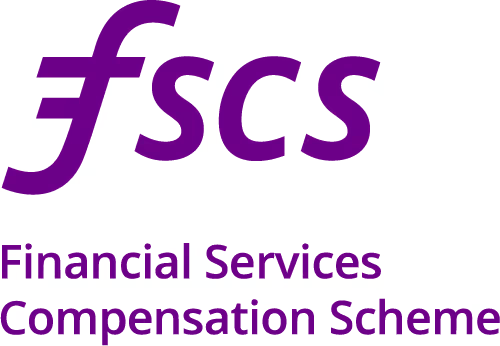
Analysis by leading online pension provider, PensionBee, has found that the UK’s highest earners left a whopping £1.3 billion of unclaimed pension tax relief to the taxman between 2016/17 and 2020/21.
Over the five-year period, PensionBee learned that, on average, three-quarters of higher rate taxpayers eligible to claim relief through Self-Assessment failed to do so, with almost half of eligible additional rate taxpayers forsaking a rebate.
Figures obtained via a series of freedom of information requests to HMRC show that the number of eligible higher rate taxpayers not claiming beyond the basic rate of tax relief has fallen, from highs of around one million individuals a year between 2016/17 and 2018/19, reducing to 864,000 and 574,000 in 2019/20 and 2020/21 respectively. Meanwhile the number of eligible additional rate taxpayers not requesting a rebate has also reduced, from 52,000 in 2016/17 to 28,000 in 2020/21.
In monetary terms, higher rate taxpayers left behind an average of £245 million each tax year, while in the case of additional rate taxpayers, an estimated £18 million went unclaimed every year between 2016/17 and 2020/21. In 2020/21 alone this equated to higher rate taxpayers missing out on an average of £425 each, and £527 in the case of additional rate taxpayers. In total, higher rate taxpayers gave up £1.2 billion, while additional rate taxpayers missed out on approximately £89 million over the same five-year period.
In order to claim tax relief on their pension contributions, eligible higher and additional rate taxpayers would need to complete a Self-Assessment, even though they are employed and usually handle their tax matters exclusively via payroll (PAYE).
Basic rate taxpayers who fall under the relief at source system for personal pensions, who numbered 6.8 million in 2020/21, would have their pension providers claim basic rate tax relief of _basic_rate on their behalf and put it in their pensions (1). For example, if a basic rate taxpayer pays £100 into their pension, the provider would claim £25 tax top up from HMRC and put it in the customer’s pension, bringing the total contribution to _lower_earnings_limit.
Taxpayers can receive pension tax relief on personal contributions they make, up to 10_personal_allowance_rate of salary, capped at £40,000 for _tax_year_minus_three for most taxpayers. Those eligible for tax relief could also use pension carry forward, which allows individuals to make use of any unused allowance from the three previous tax years, as long as they were a member of a registered pension scheme during the relevant time period (2).
Furthermore, if a saver is a higher or additional rate taxpayer, and has missed out on tax relief above the _basic_rate basic rate, they can claim relief dating back four years which, from the current tax year, is 2018/19. It’s possible to amend a tax return for up to a year after the original Self-Assessment deadline, either online or by contacting HMRC directly.
To help savers understand how much tax relief they can claim on their pension contributions, PensionBee has launched the Pension Tax Relief Calculator. Taxpayers simply need to enter their annual salary and desired annual pension contribution amount to find out how much tax relief could be added to their pension and, crucially, whether or not they need to file a Self-Assessment tax return to claim a portion of it.
Becky O’Connor, Director of Public Affairs at PensionBee, commented:
“While it’s encouraging to see the number of eligible taxpayers with unclaimed tax relief declining year-on-year, the £259 million left to the Chancellor in 2020/21 is still an eye-watering amount that should have gone back in savers’ pockets – or better yet, their pensions. Tax relief is a vital incentive that encourages people to save efficiently towards their retirement and too many people - at both ends of the spectrum - continue to miss out on this crucial benefit.
Our new tax relief calculator is designed to enable savers to see how much they’re eligible to claim back for the current tax year, and if this is likely to be done automatically by their pension provider, or if they’ll need to claim additional relief through Self-Assessment.
Savers can also use Self-Assessment to make the most of carry forward which enables them to claim any unused allowance from the previous three tax years, starting with 2019/20. They can contribute up to 10_personal_allowance_rate of their salary in the current tax year, to a maximum of £40,000. By raising awareness of this important issue, we hope to see the amount of unclaimed tax relief decrease in the years to come.”
Appendix
Table 1: Percentage of eligible taxpayers with unclaimed tax relief
Gov.uk. Calculations are based on statistics from Private Pension Statistics commentary: September 2022 (table 2.1 members) which highlights that 9 million individuals contributed to a personal pension scheme in 2016/17, 9.2 million in 2017/18, 9.4 million in 2018/19, 9.5 million in 2019/20 and 6.8 million in 2020/21. Data from the National statistics Table 2.1 Number of individual Income Taxpayers (1990/91 to _tax_year_minus_three) (table 2.1 number of individual income taxpayers) highlights that there were 31.2 million taxpayers in 2016/17, 31.2 million in 2017/18, 31.6 million in 2018/19, 31.5 million in 2019/20 and 32.2 million in 2020/21. The statistics also highlight that 4.4 million individuals (14.1%) were higher rate taxpayers in 2016/17, 4.2 million (13.5%) in 2017/18, 4.2 million (13.3%) in 2018/19, 3.8 million (12%) in 2019/20 and 4.1 million (12.7%) in 2020/21. It also highlights that 360,000 (1.2%) individuals were additional rate taxpayers in 2016/17, 390,000 (1.3%) in 2017/18, 400,000 (1.3%) in 2018/19, 420,000 (1.3%) in 2019/20 and 460,000 (1.4%) in 2020/21. We have only considered personal pensions that use the relief at source method and have explicitly excluded net pay schemes. Numbers have been rounded
Table 2: Number of eligible taxpayers with unclaimed tax relief
Source: Gov.uk. Calculations are based on statistics from Private Pension Statistics commentary: September 2022 (table 2.1 members) which highlights that 9 million individuals contributed to a personal pension scheme in 2016/17, 9.2 million in 2017/18, 9.4 million in 2018/19, 9.5 million in 2019/20 and 6.8 million in 2020/21. Data from the National statistics Table 2.1 Number of individual Income Taxpayers (1990/91 to _tax_year_minus_three) (table 2.1 number of individual income taxpayers) highlights that there were 31.2 million taxpayers in 2016/17, 31.2 million in 2017/18, 31.6 million in 2018/19, 31.5 million in 2019/20 and 32.2 million in 2020/21. The statistics also highlight that 4.4 million individuals (14.1%) were higher rate taxpayers in 2016/17, 4.2 million (13.5%) in 2017/18, 4.2 million (13.3%) in 2018/19, 3.8 million (12%) in 2019/20 and 4.1 million (12.7%) in 2020/21. It also highlights that 360,000 (1.2%) individuals were additional rate taxpayers in 2016/17, 390,000 (1.3%) in 2017/18, 400,000 (1.3%) in 2018/19, 420,000 (1.3%) in 2019/20 and 460,000 (1.4%) in 2020/21. We have only considered personal pensions that use the relief at source method and have explicitly excluded net pay schemes. Numbers have been rounded.
Table 3: Value of unclaimed tax relief
Source: Gov.uk. Calculations are based on statistics from Private Pension Statistics commentary: September 2022 (table 2.2 individual contributions) which highlight that average annual personal pension contributions per individual totalled _basic_rate_personal_savings_allowance in 2016/17, _basic_rate_personal_savings_allowance in 2017/18, _basic_rate_personal_savings_allowance in 2018/19, £1,100 in 2019/20 and £1,700 in 2020/21. These figures are likely an underestimate for higher and additional rate taxpayers. The number of eligible higher and additional rate claimants assumes a uniform distribution of pension membership among taxpayers; i.e. 12.7% of all taxpayers in 2020/21 were higher rate taxpayers and therefore 12.7% of all pension owners were higher rate taxpayers. There are some considerations around this assumption, as higher and additional rate taxpayers are more likely to have personal pensions, although they are also more likely to have remained in defined benefit schemes or opted out after having exceeded the lifetime allowance. Higher and additional rate taxpayers are also more likely to be members of salary sacrifice schemes, meaning there may be a lower proportion making personal pension contributions. Calculations take into account that higher and additional rate taxpayers can claim a further _corporation_tax and 31% through their Self-Assessment respectively, based on tax rates in England, Wales and Northern Ireland. We have only considered personal pensions that use the relief at source method and have explicitly excluded net pay schemes. Numbers have been rounded
Table 4: Average value of unclaimed tax relief for eligible individuals
Source: Gov.uk. Calculations are based on statistics from Private Pension Statistics commentary: September 2022 (table 2.2 individual contributions) which highlight that average annual personal pension contributions per individual totalled _basic_rate_personal_savings_allowance in 2016/17, _basic_rate_personal_savings_allowance in 2017/18, _basic_rate_personal_savings_allowance in 2018/19, £1,100 in 2019/20 and £1,700 in 2020/21. These figures are likely an underestimate for higher and additional rate taxpayers. The number of eligible higher and additional rate claimants assumes a uniform distribution of pension membership among taxpayers; i.e. 12.7% of all taxpayers in 2020/21 were higher rate taxpayers and therefore 12.7% of all pension owners were higher rate taxpayers. There are some considerations around this assumption, as higher and additional rate taxpayers are more likely to have personal pensions, although they are also more likely to have remained in defined benefit schemes or opted out after having exceeded the lifetime allowance. Higher and additional rate taxpayers are also more likely to be members of salary sacrifice schemes, meaning there may be a lower proportion making personal pension contributions. Calculations take into account that higher and additional rate taxpayers can claim a further _corporation_tax and 31% through their Self-Assessment respectively, based on tax rates in England, Wales and Northern Ireland. The number of higher and additional rate individuals who claimed tax relief was obtained from HMRC under three freedom of information requests (January 2020, July 2021 and February 2023). We have only considered personal pensions that use the relief at source method and have explicitly excluded net pay schemes. Numbers have been rounded.
Table 5.1: Calculations
Sources for Table 5
- Total no. of people in personal pensions: Gov.Uk (table 2.1 members).
- Total taxpayers: Gov.Uk (table 2.1 number of taxpayers). Numbers have been rounded.
- Higher rate taxpayers: Gov.UK (table 2.1 number of taxpayers). Numbers have been rounded.
- Additional rate taxpayers: Gov.UK (table 2.1 number of taxpayers). Numbers have been rounded.
- Proportion of higher rate taxpayers: Calculation.
- Proportion of additional rate taxpayers: Calculation.
- Average annual contributions per individual: Gov.UK (table 2.2 individual contributions). Numbers have been rounded to the nearest 100).
- Eligible higher rate claimers: Calculation, assuming a uniform distribution of pension membership among taxpayers; i.e. 12.7% of all taxpayers are higher rate taxpayers and therefore 12.7% of all pension owners are higher rate taxpayers. Likely an underestimate, as higher rate taxpayers are more likely to have pensions.
- Eligible additional rate claimers: Calculation, assuming a uniform distribution of pension membership among taxpayers; i.e. 1.4% of all taxpayers are additional rate taxpayers and therefore 1.4% of all pension owners are additional rate taxpayers. Likely an underestimate, as additional rate taxpayers are more likely to have pensions.
- Higher rate claimants: HMRC, obtained under three freedom of information requests (January 2020, July 2021 and February 2023). Number of higher rate and additional rate taxpayers who claimed tax relief on pension contributions made to relief at source pensions via Self-Assessment. Numbers have been rounded to the nearest 1,000.
- Additional rate claimants: HMRC, obtained under three freedom of information requests (January 2020, July 2021 and February 2023). Number of higher rate and additional rate taxpayers who claimed tax relief on pension contributions made to relief at source pensions via Self-Assessment. Numbers have been rounded to the nearest 1,000.
- Proportion higher rate not claiming: Calculation.
- Proportion additional rate not claiming: Calculation.
- Additional higher rate tax: Tax rules
- Additional additional rate tax: Tax rules
- Higher rate tax unclaimed: Calculation.
- Additional rate tax unclaimed: Calculation.
- Total: Calculation.
Footnotes











